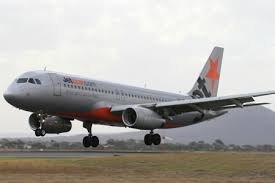October 27, 2010
Budget carrier Cebu Pacific debuted on the Philippine Stock Exchange (PSE) Tuesday as the country's biggest public offering since 2005 and the world biggest Low Cost Carrier listing, raising more than $539 million P23.3 billion) on its initial public offering (IPO).
The airline's IPO exceeded the value of Air Asia, that used to be the biggest, which raised only $220.3m, and Tiger Airways, $175.9m. Other LCCs with notable IPOs are U.S. based Southwest Airlines ($7.15 million), and Ireland's Ryanair ($159.60 million).
At least 70 per cent of the shares were sold to overseas investors by underwriters Citigroup, Deutsche Bank and JP Morgan.
Cebu’s shares closed up 6.4 per cent to P133 per share from its IPO price of P125 per share equivalent to P8.00.
84 percent of the proceeds for he IPO will go to a unit of JG Summit, its holding company while the remaining 16 percent shall be used by the airline to acquire additional planes to fly to more cities in south-east Asia.
The airline hopes to take advantage to an “open skies” deal among 10 countries of the Association of Southeast Asian Nations, due to enter into force by 2015.
Company CEO Lance Gokongwei foresees 30 percent growth in international business, looking to add new routes and increased frequencies to its 16 destinations in Southeast and North Asia.
"The Philippines itself is the closest tropical country to China, Korea and Japan, so we should take advantage of our geographical location by offering affordable airfare, air travel, to these North Asian markets" says Lance Gokongwei.
The airline CEO said that by next year they are going to do a double daily flight in Incheon, Kuala Lumpur, and Bangkok, as well as introduce new routes to include Busan in South Korea; Tokyo, Nagoya, and Fukuoka in Japan; three to four cities in China and Hanoi in Vietnam.
Gokongwei said they also intend to continue the 15 percent growth rate in its domestic operations.
Cebu Pacific is Asia’s second largest budget airline next to Malaysia's Air Asia with flights to just 16 international and 33 domestic destinations with hubs in Manila, Cebu, Clark and Davao.









